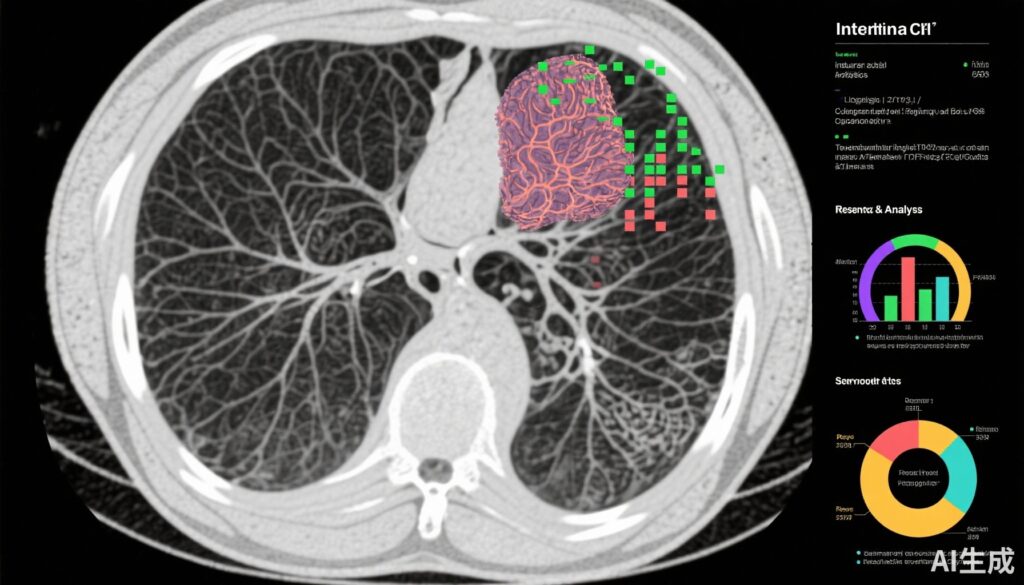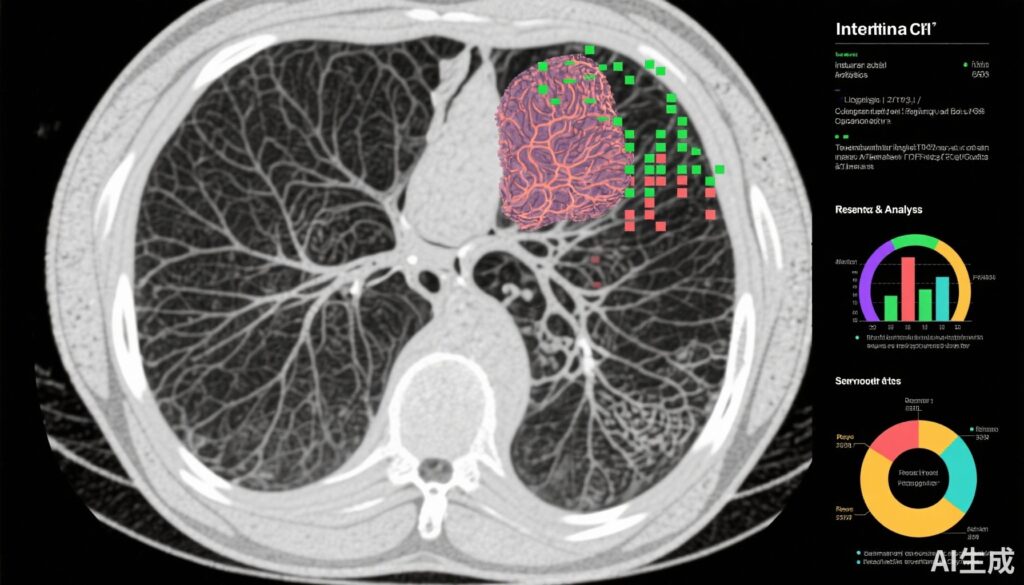Highlight
1. Approximately 11% of patients with early rheumatoid arthritis (RA) demonstrated interstitial lung disease (ILD) detectable by high-resolution CT (HRCT).
2. Older age (≥60 years) and moderate to high RA disease activity significantly increase ILD risk in early RA.
3. Several screening strategies based on readily available clinical factors showed promising sensitivity and specificity for early detection of RA-associated ILD.
Study Background
Rheumatoid arthritis-associated interstitial lung disease (RA-ILD) is a serious extra-articular manifestation of RA that contributes significantly to morbidity and mortality. Although RA-ILD is well characterized in established RA, its prevalence and predictors in patients with early RA remain less defined. Early identification of ILD in RA patients is crucial for timely intervention and may improve clinical outcomes. However, robust screening strategies for RA-ILD in the setting of early RA are scarce, complicating clinical decision-making on whom to screen and how. This knowledge gap motivated the investigation of RA-ILD prevalence, risk factors, and performance of various screening algorithms in a rigorously characterized early RA cohort.
Study Design
The Study of Inflammatory Arthritis and Interstitial Lung Disease in Early RA (SAIL-RA) is a prospective observational cohort enrolling patients diagnosed within two years of RA onset from five academic centers in the USA. For the cross-sectional analysis, patients were excluded if pregnant at enrollment or unable/unwilling to undergo HRCT chest imaging, the gold standard for ILD detection. Data collected encompassed clinical surveys, pulmonary function tests, serologic testing including anti-cyclic citrullinated peptide (anti-CCP) and rheumatoid factor (RF) status, and HRCT chest imaging independently reviewed by thoracic radiologists blinded to clinical data. ILD was identified based on radiologic criteria. Risk factors for RA-ILD were analyzed via multivariable logistic regression. The study also externally validated six published RA-ILD screening strategies—ANCHOR-RA, ACR-CHEST guidelines, a 2023 four-factor risk score, the Sociedad Española de Reumatología (SER) and Sociedad Española de Neumología y Cirugía Torácica (SEPAR) criteria, Paulin et al.’s criteria, and the ESPOIR cohort-derived criteria—evaluating their sensitivity, specificity, and number needed to screen (NNS) to detect one ILD case.
Key Findings
A total of 172 early RA patients with completed HRCT scans were included: predominantly female (74%), mean age of 55.3 years, 74% anti-CCP positive, and median disease duration under 1 year. RA-ILD was radiographically identified in 19 participants (11%). Multivariable analysis revealed that age ≥60 years (adjusted odds ratio [aOR] 3.87, 95% CI 1.33–11.27) and moderate/high disease activity assessed by DAS28-ESR ≥3.2 (aOR 7.00, 95% CI 1.95–25.13) were independently associated with ILD presence.
Screening strategies varied significantly in their diagnostic performance. The Paulin criteria (four-point cutoff) yielded poor sensitivity (5%) but high specificity (97%), favoring exclusion but risking missed cases. Conversely, the ANCHOR-RA and ACR-CHEST (one-factor cutoff) criteria achieved perfect sensitivity (100%) but only modest specificity (11% for ACR-CHEST). The ESPOIR criteria (two-factor cutoff) balanced these, with an NNS of 3.6, making it efficient for clinical implementation. These findings underscore trade-offs between sensitivity and specificity among different screening models.
Expert Commentary
The identification of older age and active systemic inflammation as pivotal risk factors mechanistically aligns with heightened immune-mediated pulmonary injury and fibrotic remodeling in RA-ILD. Screening patients with these clinical features could allow earlier intervention, potentially limiting ILD progression. However, the variable performance of screening criteria emphasizes the need to tailor approaches based on clinical context, resource availability, and patient risk profiles. Limitations include cross-sectional design precluding incidence and longitudinal risk assessment, and potential selection bias limited to academic centers. Further prospective research should integrate biomarkers, genetic predispositions, and functional respiratory metrics to refine screening tools.
Conclusion
In this well-characterized early RA cohort, interstitial lung disease is a notable comorbidity affecting approximately one in nine patients. Age ≥60 years and increased RA disease activity represent strong and clinically actionable predictors. Several screening strategies using bedside clinical data demonstrate utility for early detection of RA-ILD, although performance characteristics differ, necessitating judicious clinical application. This study lays groundwork toward standardized, evidence-based screening in early RA to improve respiratory outcomes.
Funding and ClinicalTrials.gov
This work was supported by the National Institutes of Health/National Institute of Arthritis and Musculoskeletal and Skin Conditions, the Rheumatology Research Foundation, University of Nebraska Medical Center, and University of Nebraska Health System.
References
McDermott GC, Gill R, Byrne S, et al. Risk factors for interstitial lung disease in early rheumatoid arthritis and external validation of screening strategies: a cross-sectional analysis of the prospective SAIL-RA cohort in the USA. Lancet Rheumatol. 2025 Oct 14:S2665-9913(25)00158-4. doi:10.1016/S2665-9913(25)00158-4. Epub ahead of print. PMID: 41106411.
Additional references omitted for brevity but should include relevant RA-ILD epidemiology and guideline documents.



